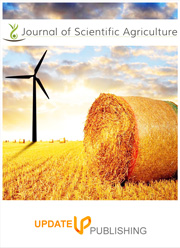Toxicity of Bacillus thuringiensis against second instar larvae of Spodoptera litura on different host plants
Toxicity of Bacillus thuringiensis
DOI:
https://doi.org/10.25081/jsa.2020.v4.6464Keywords:
Spodoptera litura, Cabbage, Okra, Horticultural crops, Microbial controlAbstract
Spodoptera litura is serious pest of many horticultural and agricultural crops. S. litura can cause severe economic loss of crops like cotton, cabbage and okra. Different methods are adopted to control this notorious insect pest throughout the globe but biological control is one of them that proved best against it. In 2019, current study was conducted to check the toxicity of Bacillus thuringiensis on 2nd larval instars under laboratory conditions by using different hosts. Mortality data was recorded at 24, 48 and 72 hours of post treatment. The results showed that maximum mortality was recorded on okra (41.46%) followed by cotton (34.67%) and cabbage (23.87%) after 24 hours. After 72 hours of post treatment, maximum mortality of larvae was observed on Bt treated leaves of cabbage than okra. The results indicated that 100% mortality was recorded on cabbage after 72 hours of treatment. Bt treated cabbage leaves were found most effective with 11.21% mortality while cotton gave least effective results with 9.99%. The current study concluded that microbial control is best approach to control insect pest under laboratory as well as field conditions.



 .
.